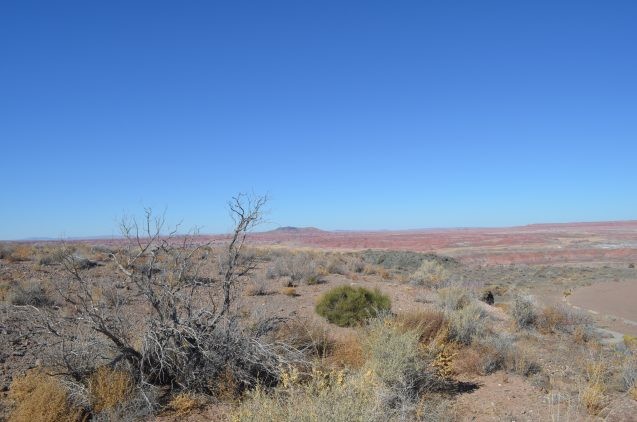'Hot Drought' Unprecedented Across Western North America Since the 16th Century, Study Suggests
Increased heat due to human-induced climate change, not just lack of rain, is driving the continued drying of soils, say researchers.

Reconstructions of summer temperatures across western North America spanning the past 500 years suggest that concurrent heat and drought conditions, known as “hot drought,” have been unprecedented in frequency and severity over the past century. The findings are derived from tree-ring chronologies that show how changing temperatures relate to changes in soil moisture. They add to growing evidence that human-influenced warming has exacerbated climate extremes across the region.
The study, by researchers at the Columbia Climate School’s Lamont-Doherty Earth Observatory and other institutions, was just published in the journal Science Advances.
Researchers have documented increasingly hot and dry conditions across western North America over the past two decades, often linking them to human-influenced warming. This includes a 2020 study employing data reaching back to the 800s, that showed human influence on the current drought. However, a lack of independent long-term temperature records to compare against long-term soil moisture records has made it difficult to discern whether the recent prevalence of hot droughts is beyond the region’s natural variability.
In the new study, lead author Karen King and colleagues mapped summer maximum temperatures across western North America from 1553 to 2020, using an extensive network of tree-ring chronologies. Combining these reconstructions with existing data on drought conditions, they found that the past two decades have been among the warmest in five centuries across much of the western United States. High temperatures appear to have amplified soil moisture deficits and contributed substantially to the frequency, intensity and spatial extent of drought conditions, the researchers found.
“Our research looked at the combined incidence of severe hot and dry conditions over the last several decades, and used tree rings to compare modern conditions with the past,” said Jason Smerdon, a professor in the Columbia Climate School and coauthor of the study. “We found that the severity of combined hot and dry conditions over the last several decades far exceeds anything that western North America has seen since at least the middle of the 16th century.”
Regions such as the Great Plains and the Colorado River basin have been historically prone to severe hot drought, the researchers note, but these past events weren’t as strongly influenced by high temperatures as they are today. The findings suggest that land-atmosphere interactions could play a more substantial role in the severity of recent megadroughts than past ones.
“The increasing prevalence of hot drought over the 20th and 21st centuries has important implications for future regional climate change adaptation strategies and for water resource management, particularly in the most historically drought-prone regions,” the authors write.
The study’s other authors include Edward Cook, Benjamin Cook and Richard Seager of Lamont-Doherty; Kevin Anchukaitis of the University of Arizona; and Grant Harley and Benjamin Spei of the University of Idaho. Karen King, formerly a postdoctoral researcher at Lamont-Doherty, is now at the University of Tennessee, Knoxville.
Adapted from a press release by Science Advances.
